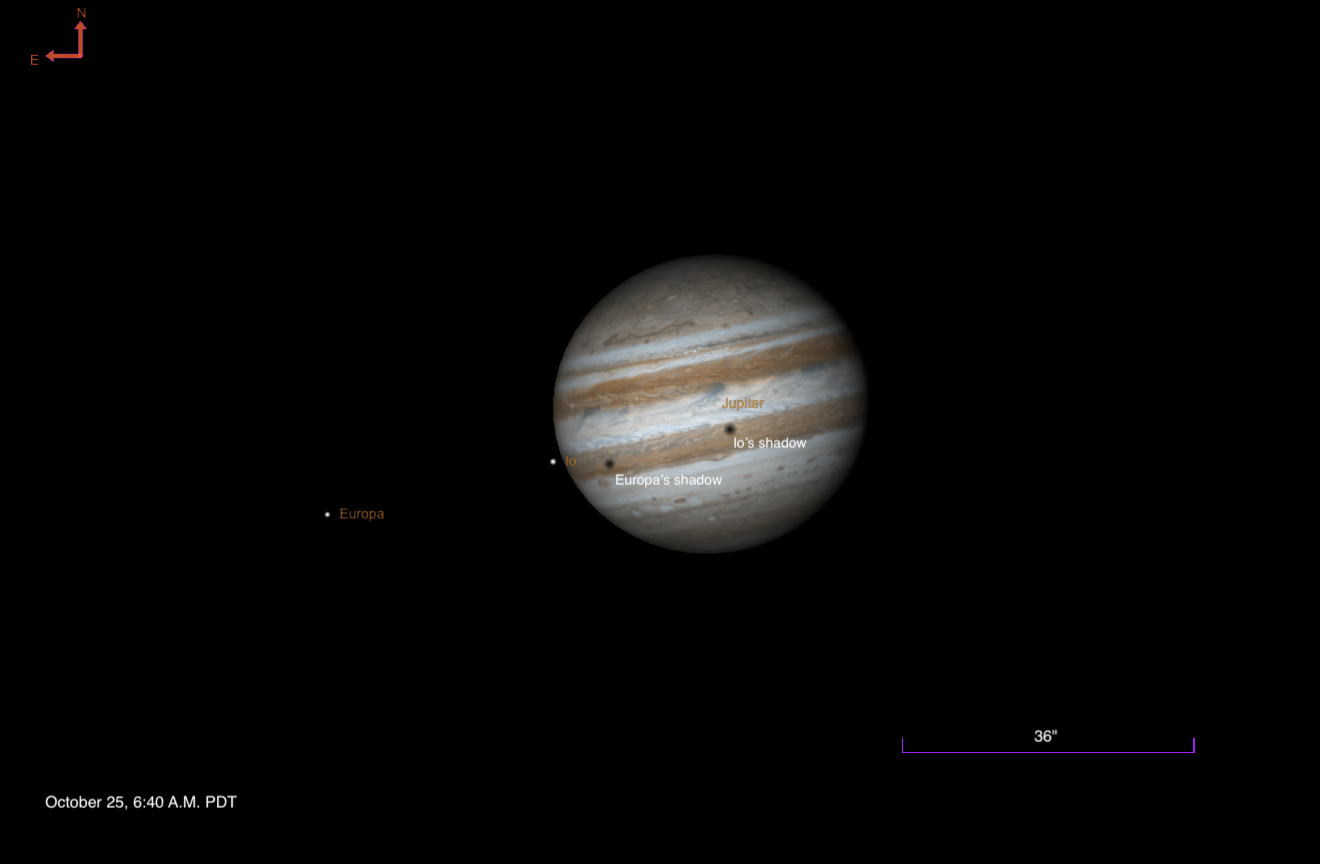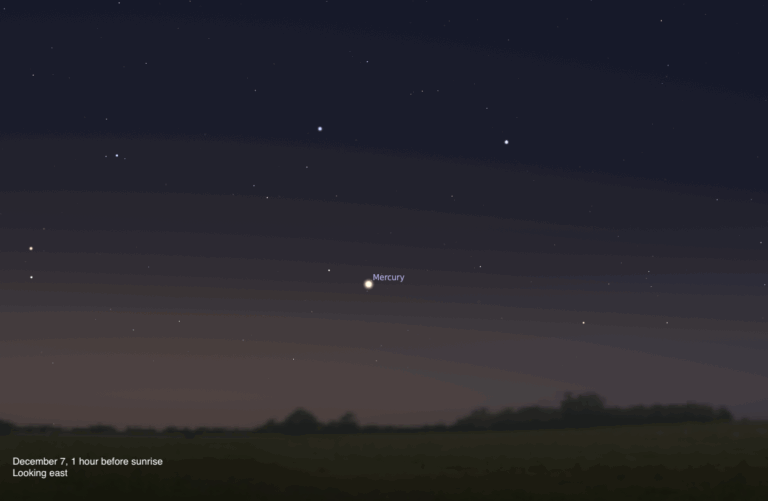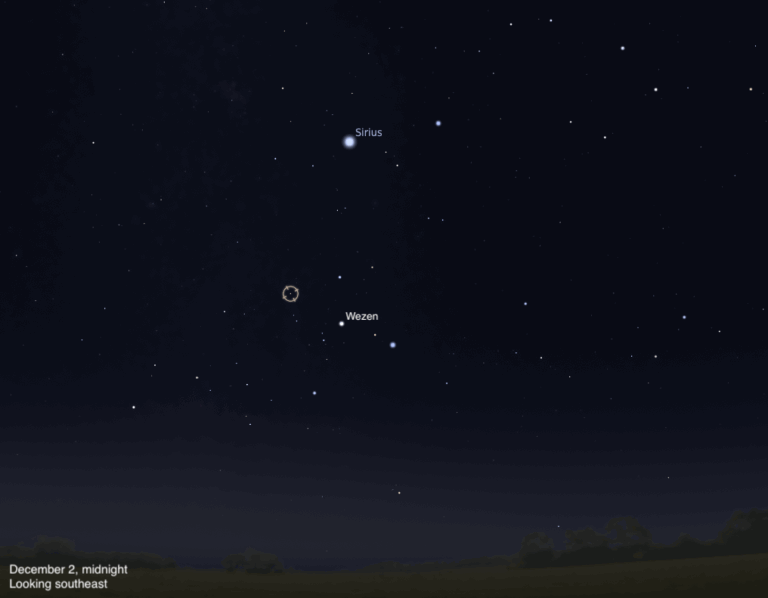
Key Takeaways:
- On October 23, the Moon will pass 0.5° south of Antares, observable low in the southwest approximately 40 minutes after sunset, potentially revealing earthshine and Mare Crisium with binoculars.
- Concurrently with the lunar-Antares event, the Teapot asterism of Sagittarius may be visible to the upper left of the pairing, also low in the western sky.
- For U.S. West Coast observers on October 25, Io and Europa will simultaneously cast shadows onto Jupiter's cloud tops, observable with a telescope approximately 40 minutes before sunrise.
- During this Jupiter event, Io's shadow will be situated near the planet's center, while Europa's shadow will be closer to the eastern limb, preceding Io's transit which commences at 6:44 A.M. PDT.
Looking for a sky event this week? Check out our full Sky This Week column.
October 23: The Moon visits Mars and Mercury
The Moon passes 0.5° south of Antares at 9 P.M. EDT. However, the pair sets an hour and a half earlier; try catching them about 40 minutes after sunset, when they are low in the southwest.
At 6:50 P.M. CDT (in the Midwest), the delicate crescent Moon hangs almost directly below ruddy Antares, which marks the heart of Scorpius the Scorpion and shines at magnitude 1.1. The two are roughly 1.6° apart, easy to catch together in binoculars, which will likely show off a bit of earthshine on the Moon. This occurs when sunlight bounces off Earth and illuminates the portion of our satellite still experiencing night. Only the eastern edge of the Moon is directly illuminated, and you may be able to pick out the large, round shape of Mare Crisium.
To their upper left, see if you can spot the Teapot of Sagittarius as it begins to pop out against the darkening sky. This region is also low — about 15° high an hour after sunset — but you might be able to catch it before it sets.
Sunrise: 7:21 A.M.
Sunset: 6:07 P.M.
Moonrise: 10:35 A.M.
Moonset: 7:34 P.M.
Moon Phase: Waxing crescent (12%)
*Times for sunrise, sunset, moonrise, and moonset are given in local time from 40° N 90° W. The Moon’s illumination is given at 10 P.M. local time from the same location.
U.S. West Coast observers are in luck tomorrow morning, October 25, as Io and Europa cast their shadows together on Jupiter’s cloud tops as twilight is brightening the sky — an event that occurs after sunrise for the rest of the U.S.

40 minutes before sunrise, Jupiter is nearly 80° high in the south. Through a telescope, you’ll spot a pair of shadows on the disk — one nearly halfway across its trip from east to west, and the other near the eastern limb. The shadow roughly in the center of the planet is Io’s, cast by its parent moon just off the eastern limb. The dark spot that has just begun crossing and is closer to the limb belongs to Europa, to Io’s east. (Much farther east of this pair is Ganymede, while Callisto lies alone to the planet’s west.)
See how long you can follow the moons and their shadows as the sky brightens. Io begins to transit at 6:44 A.M. PDT, not long before sunrise (note the exact time of sunrise will depend on your location).









